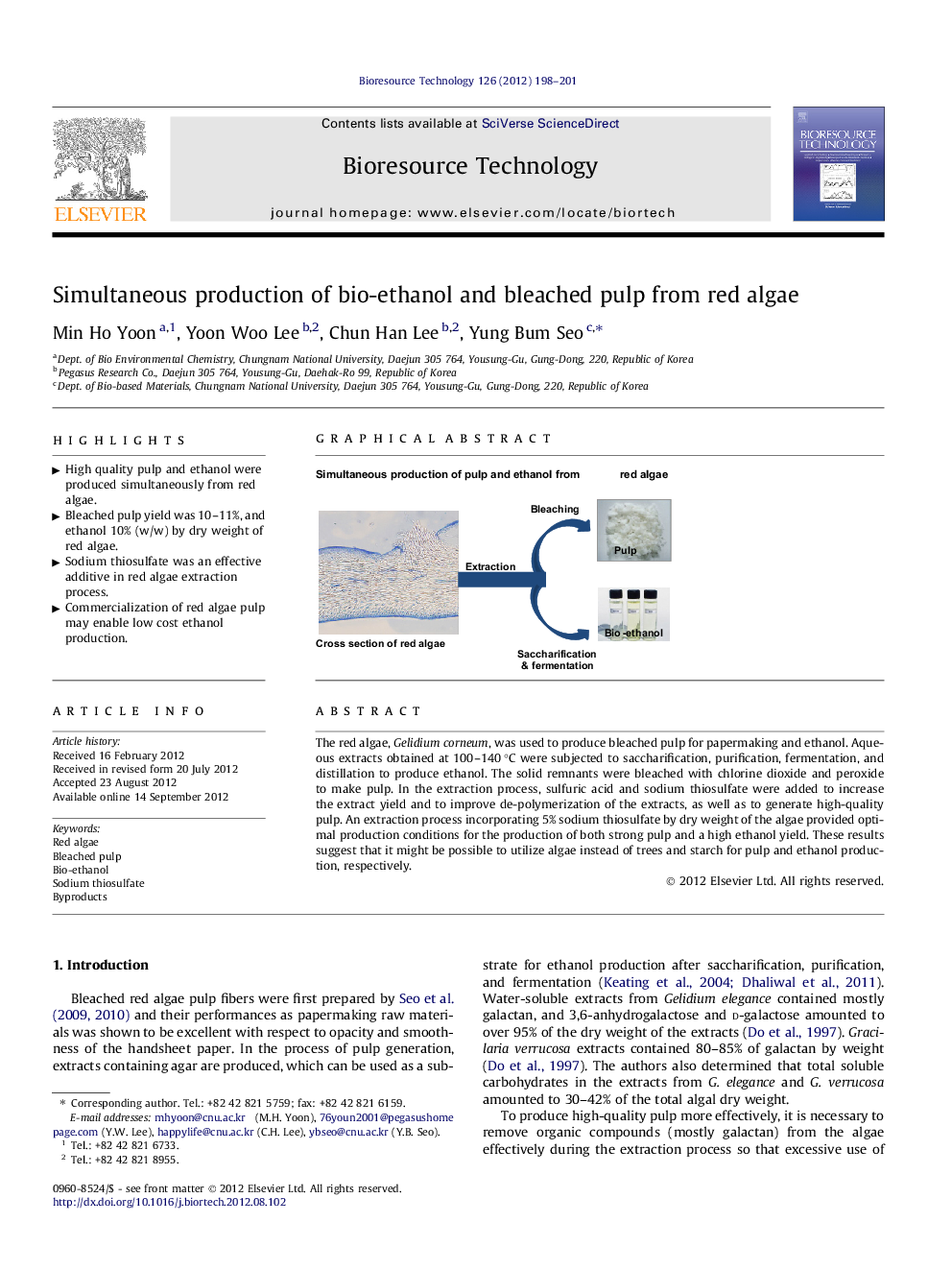| Article ID | Journal | Published Year | Pages | File Type |
|---|---|---|---|---|
| 681259 | Bioresource Technology | 2012 | 4 Pages |
The red algae, Gelidium corneum, was used to produce bleached pulp for papermaking and ethanol. Aqueous extracts obtained at 100–140 °C were subjected to saccharification, purification, fermentation, and distillation to produce ethanol. The solid remnants were bleached with chlorine dioxide and peroxide to make pulp. In the extraction process, sulfuric acid and sodium thiosulfate were added to increase the extract yield and to improve de-polymerization of the extracts, as well as to generate high-quality pulp. An extraction process incorporating 5% sodium thiosulfate by dry weight of the algae provided optimal production conditions for the production of both strong pulp and a high ethanol yield. These results suggest that it might be possible to utilize algae instead of trees and starch for pulp and ethanol production, respectively.
Graphical abstractFigure optionsDownload full-size imageDownload as PowerPoint slideHighlights► High quality pulp and ethanol were produced simultaneously from red algae. ► Bleached pulp yield was 10–11%, and ethanol 10% (w/w) by dry weight of red algae. ► Sodium thiosulfate was an effective additive in red algae extraction process. ► Commercialization of red algae pulp may enable low cost ethanol production.
